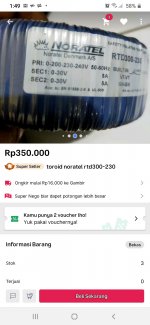As for using a front end higher power supply voltage it has the following advantages:
1) increase max amplifier output power allowing only output stage losses
2) isolate front end voltage fluctuations caused by output stage.
3) clipping is caused by output stage only and not front end
The disadvantages are:
1) more complexity for routing secondary PSU wiring to minimize noise.
2) extra boards and space required in chassis
I have used secondary PSU for front end in several amps such as Goldmund Telos clone, VSSA-FAB, SKA-150GB....
My actual FSSA-1 and FSSA-2 amps do not have secondary PSU.
If I may suggest one can plan for space provisions in chassis for secondary PSUs for possible upgrade...😉
Fab
Input stage - could you tell me what is the min voltage is please?
Could the input stage be run 26v, with 1.3ma bias (as per USSA), then front end at say 33v? Is the 7v difference mandatory / min / max, or could it be pushed higher to 40-50v? (thermals permitting)
Just wondering if this is a good way to run high bias class AB, or just stick with 800ma and single psu as per manual.
Thanks
You could only run the input stage and the VAS/driver stage together with an auxiliary power supply. The IPS then seems to be regulated by the zeners to half of it depending on value choosing.
As it's stated in the manual the voltage of the auxiliary power supply should be about 5-7V higher than the voltage of the main power supply for the output stage.
I know some designs where the difference between both supplys is 23V (an old HK ampfifier series). But if it makes sense? Only fab can answer that.
As it's stated in the manual the voltage of the auxiliary power supply should be about 5-7V higher than the voltage of the main power supply for the output stage.
I know some designs where the difference between both supplys is 23V (an old HK ampfifier series). But if it makes sense? Only fab can answer that.
you are correct nfsgame regarding the auxiliary supply voltage. I suggest to build the map first with only the main supply before experimenting on the auxiliary supply. Have in mind that the max voltage is for the front end and not the output stage.
The input is not regulated but only the cascode part with the zener diode. However there is a capacitance multiplier for the front end when no auxiliary PSU is used.
fab
The input is not regulated but only the cascode part with the zener diode. However there is a capacitance multiplier for the front end when no auxiliary PSU is used.
fab
Last edited:
My parcel has just arrived, all is well, many thanks Fab!
Those PCBs are really high quality and look gorgous!
Bon trêve estivale
Claude
Those PCBs are really high quality and look gorgous!
Bon trêve estivale
Claude
Cheers Brianco - I’m still torn on what to build first. USSA using the PCB’s you provided me with or FSSA!
Thanks Fab for the shipment confirmation. Looking forward to it. Could you email me the tracking number?
Thanks everybody for your appreciation!
@AnthonyA, you are preparing for your next FSSA build...
Fab
@AnthonyA, you are preparing for your next FSSA build...
Fab
Should have at least one ready by this year.
I'm luckier as far as I see , got phinnochio and you to point me in the right directions. And I was confident enough to give it my best effort. Very lucky and fortunate to trust the right guys .
I'm luckier as far as I see , got phinnochio and you to point me in the right directions. And I was confident enough to give it my best effort. Very lucky and fortunate to trust the right guys .
Hi Fab, I haven't started building the amp but I have question. I got a match 170/j74 with IDSS 9.2 - 9.6, which is over your requirement, is the heatsink still required for this input transistor? The PSU would be +/- 50Vdc.
On step 21 of your document, what is the watts rating of the 100 ohm resistor? Is 1/2 watt good enough?
Thanks,
Fred
On step 21 of your document, what is the watts rating of the 100 ohm resistor? Is 1/2 watt good enough?
Thanks,
Fred
Hi Fredlock
Yes a small heatsink is recommended but not mandatory because it would give about 160mw if using 24Vdc zener instead of the target of 150mw. However the current for the bjt Q1 and Q2 will be the same as the jfet so in the long run I would put the heatsink on all input stage transistors but ok without it for the testing and for not so long (few months for example).
The 100 ohms power depends on the level you play to it , P = v^2 / 100. No need to calculate rms power. For small level, you can use low power resistor.
Fab
Yes a small heatsink is recommended but not mandatory because it would give about 160mw if using 24Vdc zener instead of the target of 150mw. However the current for the bjt Q1 and Q2 will be the same as the jfet so in the long run I would put the heatsink on all input stage transistors but ok without it for the testing and for not so long (few months for example).
The 100 ohms power depends on the level you play to it , P = v^2 / 100. No need to calculate rms power. For small level, you can use low power resistor.
Fab
Last edited:
- Home
- Amplifiers
- Solid State
- FSSA amplifier build thread with review
